What drives the irresistible pull toward someone you’ve just met? The answer lies in the ‘chemical of love’: a combination of neurotransmitters and hormones like dopamine and oxytocin that orchestrate the sensations of love and attachment.
This article dives into the biological underpinnings that make love feel profound and reveals how these chemicals influence our connections and behaviors in romantic relationships.
Table of Contents
Key Takeaways
- Love is influenced by brain chemistry, involving hormones and neurotransmitters like dopamine, oxytocin, and sex hormones, which affect emotions, bonding, and sexual attraction.
- Oxytocin, known as the ‘cuddle hormone,’ promotes social bonding, provides a sensation of calm and security, and plays a crucial role in long-term attachment, especially during intimate activities like sex, cuddling, and kissing.
- The early stages of love stimulate a complex mix of brain chemicals, leading to pleasure, excitement, and obsession. This is fueled by the brain’s reward system, which is considered a fundamental human motivation system for mating.
The Alchemy of Attraction: Unveiling the Chemical of Love

Some say love is blind; others believe it’s all in the stars. But what if I told you it’s all in your head, or more specifically, in your brain’s chemistry? That’s right, the feelings of passionate love and sexual attraction you experience are largely due to the interplay of hormones and neurotransmitters like dopamine, oxytocin, and sex hormones. Just as alchemists sought to turn lead into gold, these chemicals transform our emotions and behaviors, contributing to the reward system, fostering attachment and social bonding, and igniting sexual desire and arousal.
Imagine you’re at a party, and your eyes meet someone across the room. Instantly, you feel a pull, a spark of interest. Your heart races, your palms get sweaty, and the rest of the world seems to fade away. This is your body responding to a potential mate, powered by the chemical of love released in your human brain. You start to find this person attractive, and before it, you’re falling, falling into the deep abyss of love. But what exactly is happening in your brain during this process of reward detection?
To answer that, let’s delve deeper into the roles of the chemical of love, starting with oxytocin, often referred to as the ‘cuddle hormone.’
Oxytocin – The Cuddle Hormone

Oxytocin, or the ‘cuddle hormone’ as it’s commonly known, plays a significant role in fostering social bonding and attachment. Think back to the time when you first held hands with your partner or shared your first kiss. The warmth you felt, the connection you experienced – all were a result of oxytocin being released in your body. This hormone is often released during intimate activities like sex, and its presence is heightened by:
- skin-to-skin contact
- hugging
- cuddling
- kissing
These activities, including sexual activity, serve as precursors to bonding and provide an opportunity to acquire rewards.
Oxytocin not only helps with bonding but also brings about feelings of contentment, calmness, and security, which are known to strengthen mate bonds. The next time you cuddle up with your partner, remember that it’s not just about physical comfort. It’s all about the invisible threads of oxytocin weaving a bond between you two.
When you reach the peak of pleasure during an orgasm, your body is flooded with oxytocin. These higher levels of oxytocin during orgasm contribute to bonding between couples, promoting the transition from passionate to compassionate love and establishing secure attachment patterns. Thus, oxytocin not only sparks the fire of attraction but also helps keep it burning, enabling long-lasting relationships.
Early Love: A Neurochemical Cocktail
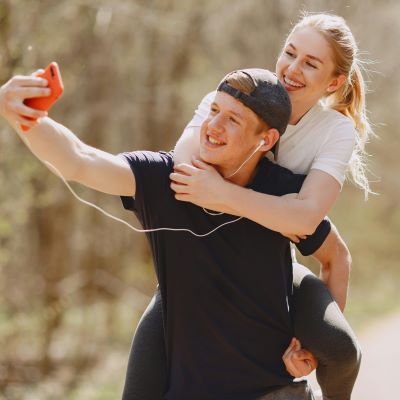
Now, let’s turn our attention to the early stages of love, which are characterized by an intoxicating neurochemical cocktail that triggers positive emotions. Studies of couples in the early phase of love have painted a fascinating picture of the brain in love. High levels of dopamine signal an intense rush of pleasure, coupled with the release of norepinephrine, contributing to feelings of excitement and happiness while al potentially causing anxiety.
Meanwhile, low levels of the neurotransmitter serotonin result in ‘intrusive, maddeningly preoccupying thoughts, hopes, terrors of early love,’ contributing to the intense emotional experience and negative emotions. At the same time, the hypothalamus triggers the release of sex hormones like testosterone and estrogen, which heighten feelings of lust, passion, and sexual arousal. High levels of cortisol during the initial phase of romantic love may lead to depleted levels of serotonin, causing obsessive thinking and compulsive behaviors associated with infatuation.
Functional magnetic resonance imaging (fMRI) studies, which involve brain scans, suggest that the early stages of love involve areas ascribed with motivation and goal-oriented behavior, as well as the brain’s reward system, including the prefrontal cortex. This indicates that love operates as a primary motivation system and a fundamental human mating drive. Researchers at Harvard Medical School have al explored the role of the reward system in romantic love.

In a similar vein, Weill Cornell Medicine brain experts have been examining the neurological underpinnings of love. The next time you catch yourself daydreaming about your crush or planning your future together, remember that it’s all part of your brain’s master plan to keep you focused on your romantic goal.
Summary
In the grand scheme of things, love is a complex and beautiful alchemy of attraction, a dance of the chemical of love that shapes our emotions and relationships. From the first spark of attraction to the deep bonds of long-term relationships, our feelings and behaviors are guided by the unseen hand of hormones and neurotransmitters. the next time you feel that indescribable pull towards someone or the warmth of a long-lasting bond, remember, it’s not just about the heart but all the remarkable chemistry of love at play.
What is the love chemical?
Oxytocin is often referred to as the “love hormone” or “cuddle chemical” because it is associated with trust, sexual arousal, and relationship building. Its levels increase when hugging someone or experiencing an orgasm.
What are the 5 love hormones?
The 5 love hormones are oxytocin, dopamine, serotonin, testosterone, and estrogen. They each play a role in different aspects of love, creating feelings of happiness, attraction, and attachment.
Is love dopamine or serotonin?
Love is associated with a surge of dopamine, a neurotransmitter in the brain’s reward system that provides pleasure and fuels our obsession and focus. This chemical activation is similar to the euphoria experienced with cocaine or alcohol.
Why is oxytocin referred to as the ‘cuddle hormone’?
Oxytocin is often called the “cuddle hormone” because it is released during intimate activities and skin-to-skin contact, fostering social bonding and attachment. This helps us feel closer to others and promotes trust and empathy.
How do the early stages of love affect our brain chemistry?
In the early stages of love, high levels of dopamine and norepinephrine contribute to feelings of pleasure and excitement, while low levels of serotonin lead to obsessive thoughts, amplifying feelings of lust and passion. This combination of chemical changes in the brain results in intense emotions associated with early love.
Transcript: Chemical of Love – Interview with Dr. Paul J. Zak

Luis Congdon
Welcome to the Lasting Love Connection podcast. I’m your host, Luis Congdon. Today, we’re going to be looking at oxytocin. What is it? What does it do? Is it responsible for trust, morality, and love?
Dr. Paul J. Zak is one of the leading researchers in the United States on the molecule oxytocin. He’s the director of neuroscience studies at Claremont Graduate University and a member of the neurology department at Loma Linda University Medical Center.
I first found Dr. Paul J. Zak’s work in an article that he wrote in Psychology Today titled, Why Men Cheat. In the article, Dr. Paul J. Zak takes a look at why men cheat. Does oxytocin, testosterone, or other brain chemicals have anything to do with it? Is monogamy something that we’re actually bred to do? Or is it something that we’re hardwired to do?
His article is a fascinating look at brain chemistry and how it has to do with trust, social monogamy, and sexual promiscuity. From there, I had to follow up and look at his book, The Moral Molecule: The Source of Love and Prosperity. The book was a real in-depth look at why humans tend to be good people and how trust can be built very quickly through this little chemical of love on the brain titled oxytocin. It’s a great book, and I highly recommend it to anybody. In today’s interview, we’re going to be talking about it, how it impacts you, and how it impacts your relationships with others.
Luis Congdon
Welcome to the show, Paul. It’s great to have you here. , let’s get started.
What is Oxytocin? What does it do, and why is it important?
What is Oxytocin, and Why Is It Important?
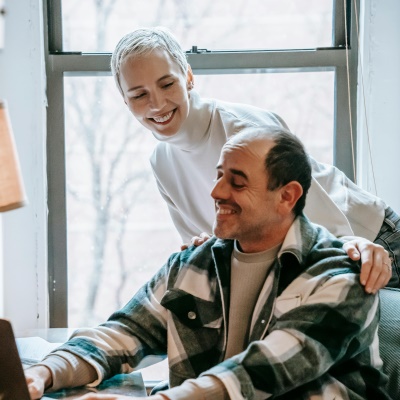
Dr. Paul J. Zak
Oxytocin was only known until about 10 years ago to facilitate birth and breastfeeding in women, and yet in animals, had been shown to allow for the toleration of burrow mates I got very interested in moral behavior for a rean that we can talk about in a minute. But I thought tolerance of burrow mates runs on a continuum, from really caring about people to perhaps even treating them well. Once I heard about oxytocin and read about it, I thought, well, this unds like an interesting mechanism that might make humans care about each other.
I had this idea, and I did what most of us do. I tried out my colleagues, and one of them said it was the world’s stupidest idea because everyone knew oxytocin was only for birth. But I said men make it, too. It’s not just for women, and there must be a reason why, and this guy said, well, it’s like nipples. Men have nipples, but they’re not functional, and oxytocin is the same way.
Anyway, I thought differently because I’m kind of stubborn. What we find now is that oxytocin makes us care about strangers and behave in positive or moral ways. I call it the “moral molecule” because it seems to underlie much of the good behavior we see between people we care about and even people with strangers.
Luis Congdon
What’s fascinating about what you’re saying is that there’s an actual molecule or chemical of love in the body that makes people moral, caring, or loving. I’m just astounded by that because, traditionally, we tend to think of morality as something that we feel or something that we think about. But what you’re saying is that there’s an actual part of our brain and our body that is made to be moral, loving, or trusting.
Dr. Paul J. Zak
That’s right. We’re certainly biased toward trusting people who are in safe environments, who grow up healthy, and who are not psychologically challenged. We can also talk about the inhibitors.
As you said, it’s nice to know if a chemical of love is involved. Because chemicals, from an experimental perspective, are very concrete. I can measure them, and I can manipulate them, and we’ll talk about how we’ve done that. But at the same time, it all tells us about how this chemical oxytocin interacts with other factors in the brain to sort of tune-up or tune down moral behavior.
Morals and the ‘Golden Rule’

And I guess at least we should also tell listeners we should define morals. Moral has no religious or philosophical overlay in the way I’m using it. Morals simply mean the golden rule. If I treat you in the same manner that I expect myself to be treated, and the golden rule exists in every culture in the country and the world, then I would call that “moral behavior.”
Now, if I treat you better than I expect myself to be treated, I’ll call that a “virtuous behavior.” And we’ve seen our system motivates all these virtuous behaviors. But moral essentially means post-social. I’m reaching out and connecting to people around me in tangible ways.
Luis Congdon
To help my listeners understand, the golden rule is the principle of reciprocity. If I treat you well, you will likely want to treat me well. Is that the golden rule?
Dr. Paul J. Zak
That’s exactly right. We’ve also found reciprocity, which is the underlying chemical basis for ‘if you treat me badly, I’m going to treat you badly too.’ We need both sides to navigate through the sea of strangers that we live in.
I think of oxytocin and a couple of other molecules we’ll discuss, testosterone and cortisol, as rocket thrusters. We constantly modulate our behavior to the behavior that’s most appropriate for the situation we’re in, and these mechanisms are evolutionarily old; they’re generally not open to conscious awareness.
That’s why sometimes, high stress, for example, inhibits oxytocin release. When you’re stressed out, and you’re grumpy, and you’re grumpy with the people around you, and then the next day you go or that night you go, “Man, I was a big jerk yesterday. How did that happen? I’m a good person”. And then you go back the next day and apologize to your spouse or your colleagues, whoever, and say, “Man, I had a terrible day yesterday, and I kind of took it out on people around me. I’m sorry. I hope you forgive me.”
Again, it’s not that this chemical takes us from 0 to 100. It’s that we’re usually going through the world in a neutral way. When we induce the brain to release oxytocin or manipulate it pharmacologically, we can move you from, say, neutral to 65. Now, I’m going to treat you a little better than I would expect other people to treat me. Again, it’s not like people become tired of automatons or they’re “gorked” out or something.
People are very aware of what they’re doing. They’ve just narrowed that self-other divide and given a little more weight to the other, and that’s a really beautiful thing. Human beings are the only animals that do that regularly and with strangers, and it’s one of the amazing things about the human species.
Related Podcast: Emotional Awareness
Moral Behavior and the “Trust Game”
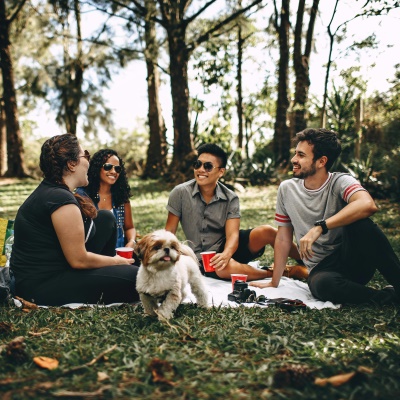
Luis Congdon
I think about your work and its implications. There are a lot of implications about the imbalances that people may have of testosterone, like maybe athletes, for example, that work out a lot of people that have higher levels of oxytocin or the people blaming it may be saying, “Oh, I just had a bad day. It was the testosterone or the cortisol”, or blaming it on hormones sometimes. I would like to get into your research a little bit, and then maybe we can talk a little bit about some of the implications of how stress affects oxytocin levels. But first, I wanted to let my listeners understand on a basic level what your research was. Can you tell me about your research at UCLA with the trust game?
Dr. Paul J. Zak
Sure. I should say that back in the old days (even though I now have a big lab with 35 people), I had no lab and no track record in Massachusetts. I was way off the reservation here. I got permission to borrow a lab at UCLA and borrowed a bunch of equipment, put together myself and a post-doctorate undergraduate student. We ran this experiment, which is now called the “trust game,” as a way to quantify one kind of moral behavior. In this case, why you would be trustworthy?
Again, you want to start small. Morality is a giant topic. We started small, and we didn’t want to rely on people’s self-reported behaviors because we have an incentive, even internally rt of color, that what we’re doing is a bit better than it might be. , in these experiments, we tempt people with virtual advice using money because it’s a convenient way to quantify what people care about.
So, here’s the experiment. We recruit a bunch of people for this experiment, between 12 and 20 at a time. They get checked in. They get a secret number to match their identity, they can do whatever they want, and no one’s going to know. And they’re paid cash in this experiment at the end of the experiment by a cashier who’s not part of the experiment. It’s in partitioned computer stations. They have a huge amount of privacy, and we never see people in these experiments.
We pay them for this. There’s no secret agenda, no hidden cameras, because we’re studying moral behavior, and it would be really bad karma if we deceived people when we studied moral behavior. Here’s the task: You log into the computer with your secret number, and you get randomly matched with someone else in the lab, but you don’t know who that person is. You can’t see him or her. You can’t talk to them.
Within each pairing of people, there’s a first decision maker and a second decision maker. After lots of instruction and examples and a chance to ask questions because we don’t want people to be confused, the first decision maker gets a prompt by computer saying, would you like to take me of the $10 you’ve earned for being here, for sitting in these, hard chairs for an hour and a half and give up me of that money and transfer it to the pern you’ve been matched to.
Whatever you give up comes out of your account but gets tripled in the other person’s account. If you give up, say, 8 of your $10, you keep 2, the other pern now has $24. Then the second pern gets a prompt by computer saying pern 1 in your pairing sent you $24. The total in your account is 34 because you got 10 for showing up too. Would you like to send me the amount back to the first person?
If you think about this task, it’s unclear what to do unless you have my model of human nature. This task was invented by experimental economists led by Werner Smith, who won the Nobel Prize for this work. The consensus view in economics is that transferring from person 1 to person 2 is a measure of trust, and the return transfer from person 2 to person 1, which comes out of person 2’s account, 1 to 1, is not tripled, is a measure of reciprocity or trustworthiness.

That’s a nice task to measure, and it explains why people will never be trustworthy in a one-shot setting when nobody’s watching. In fact, people readily do this. About 95% of people who receive money return it to the first person who showed them trust. Of course, we never use the word trust or trustworthiness. We say money in pern.
The question is why, and in fact, economists were flummoxed on why person 2 would ever return the money because no one’s watching, and they assume money is really good. But what economists don’t realize is that, look, when I send you money as pern 1, it’s not just the money I’m sending you, I’m sending you information. I’m sending you essentially a plea to reciprocate with me. A plea to follow the golden rule, which says, “Look, I sacrificed to help you because you understand the situation. You understand that money can grow by 3 and that’s a great deal for both of us and I hope, believe, trust that you will reciprocate and, , share me of that largesse back with me”.
As I said, 95% of people do that. What we showed is that the more money you receive as a second decision-maker, the more your brain produces oxytocin. Then, the more oxytocin you have on board, the more money you reciprocate.
This is really big news to me. We have an underlying biology of the golden rule. There are a couple of things wrong with this experiment; potentially, nothing in the body happens in isolation. We measured 9 other chemicals that interact with oxytocin. You mentioned a couple of these already: cortisol and testosterone. We didn’t find those had any direct or indirect effect on the behavior or oxytocin release. The second kind of hole in this experiment is that oxytocin is this very shy molecule; it is coaxed out of the brain and has a 3-minute half-life.
I don’t want to leave that moral lever on too far because I might run into me sketchy guy and, , I don’t want to compassionately behave toward someone scary or aggressive. I want to get away or fight with them or whatever. It’s a very delicate little molecule.
Maybe we’re just sloppy. Right? Maybe we just blew it. We missed the correct variable, and we got me randomly happened to get a change in oxytocin. I knew that for the next experiment, we had to go in and manipulate oxytocin directly. In these experiments, we got permission to use a nasal inhaler that shoots synthetic oxygen into the nose and gets into the brain. We had people do this trust experiment again, and we found that compared to people on placebo, those who got oxytocin were not only more trusting with strangers and their own money, but they more than doubled the number of people who sent all the money to a stranger. We have profound effects.
Again, the two important halves. We showed that when someone trusts you, your brain releases oxytocin and motivates you to reciprocate, and then if we manipulate that system in the brain, we can cause you to be more trusting, and we’ve closed the circle that both factors happen. Anyway, I think again, this is really big news because, as you said, now we have this biological reason to think that people are biased towards being cooperative and trusting, and now we know why. And, of course, that opens another question. Right?
The next experiment will determine what inhibits this, what ramps it up, and what ramps it down.
The Chemical Of Love & The Home Circuit

Luis Congdon
I was fascinated by what you said because I learned that when we trust someone else, their bodies release oxytocin, which makes them feel good.
Dr. Paul J. Zak
Right. It is sometimes called the “love chemical” because it motivates parents to care for and love their offspring in most mammals, including humans.
I think we ought to open up and use the word “L” now. I can’t force someone to love me, but I can give my love to somebody else, and hopefully, that will be reciprocated. I think one of the beautiful things about oxytocin research is that you have to be open and giving. You can’t force someone to release oxytocin, and it’s hard to manipulate people, although some people do that. But for most of us, you have to give this freely. You have to trust someone and hope they’re going to reciprocate.
You have to be kind to someone, transparent, and then hope someone will do the same with you. In your questions, you talked about your spouse and children, and that’s the important part. The brain circuit that utilizes oxytocin, which I call the “home circuit,” stands for the “Human Oxytocin Mediated Empathy” circuit.
This brain circuit, which uses oxytocin and a couple of other neurochemicals, starts at home. It starts with the nurturing behavior that many people in the world are blessed to get from their parents or other caregivers where they are fed, they’re shown love, they’re shown affection, they’re given safety. And what we’ve seen in studies of animals and studies we’ve done in sexually abused women is that if you don’t have enough early childhood nurturing, or for that matter, food, this system tends not to develop where very well. And about half the people we measure have a dysregulated oxytocin system, and they don’t connect to other people very well.
I think, for parents, the takeaway is that your children are going to end up being whatever they’re going to be, and what they need from you is enough food and enough affection. I don’t think you can spoil children with too much affection.
And for our spouses, the same thing. I think it’s very important to ensure that this system is utilized a lot. we know from work in animals and our little work in humans that the more you induce oxytocin release, the lower the threshold for release. In other words, the more you connect to people, the easier it is to connect to people, and it starts at home. It starts with the people around you, the people who live in your household, and if you can connect to them, then in a sense, your brain gives you the luxury of connecting to strangers as well.
Again, not for everybody, and for individuals who suffer from a variety of psychiatric illnesses like autism, schizophrenia, and social anxiety, the system is, in many of them, highly dysregulated. We’re involved in my lab, and a bunch of others are involved in clinical trials now, looking at replacement therapy, but so far, the results are very modest. No oxytocin replacement is not going to cure the system. Again, because the home circuit in the brain has not developed properly or is not working properly.
The Power of Touch

Luis Congdon
I love your acronym “home” and how it relates to the work that I do with couples and families because it’s about home and how important that is. Now I’m curious.
What are some things that parents can do to help release oxytocin? One I know is maybe giving trust to our children, giving trust to our spouse, or touching. Can you say anything else about that at all?
Dr. Paul J. Zak
Sure. The book Moral Molecule has a lot of applications. It’s both the story of this sort of unlikely discovery of this chemical of love that drives much of our behavior as human beings but al really how you can use it to improve your life, your relationships, and your happiness levels. we’ve been investing in a lot of ways that cause oxytocin. I’ll give you a couple. One, as you mentioned, is the role of touch. We’ve shown in a laboratory study that touch releases oxytocin. Well, like that, oxytocin reduces anxiety and improves the immune system.
Social connections are strongly productive and protective against early death and sickness. Those social connections are strengthened through oxytocin release, which tells our brains that the environment is safe, comfortable, and relaxing. Touch is very important. As I advocate, eight hugs a day. If you’re hugging eight people a day, you’re getting many chances for your brain to release oxytocin in others and have them reciprocate to you.
I don’t know if people want to go as far as me. I actually refuse the handshake now, and I hug everybody, even people I have met for the first time. But with children, again, touch is very important. Another example is that I Googled “children,” and I started thinking about the time-out we use, and a time-out makes no sense at all to me. The time-out says, ‘You’re misbehaving; we don’t want to be around you.’
I invented the “time in” and it says, “You’re having a really bad day, what you need is more attention”. And my kids, who are 9 and almost 13, have to sit in my lap when they’re acting out for as many minutes as they are old and just with me. The beautiful thing about this is the 9-year-old loves it. It’s very calming for her, and the 13-year-old is scared to death, so I’ll do this when her friends are over.
It works both ways. Again, I think that having the language of oxytocin and the need to connect does help us think about that as a priority. Again, because these systems that utilize our systems are evolutionarily old, they’re way outside of conscious awareness. Suppose we become aware of them, and we can talk about ways that you and I have done that, once we become aware of them. In that case, we can be more conscious of utilizing oxytocin to strengthen those relationships and the relationships that make us happy.
One of the punch lines from the book is a study we ran last year in which we’ve shown that people who release the most oxytocin when they’re trusted are happier. They’re happier because they have better relationships of all types: better romantic relationships, closer friends, closer to family, and even kinder to strangers in our laboratory tasks and money-sharing tasks.
It is possible to build a world that sounds like the world I want to live in and the world you want to live in, which is very connected, very caring, and very loving, just by taking the chance of reaching out and showing you trust them and show you care about them, even strangers.
Having Strong Relationships Make Us Happy
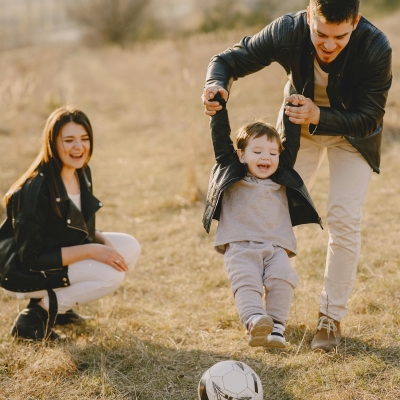
Luis Congdon
Yeah, I want to live in a world where more people are willing to extend generosity and show each other care. In your book, you shared a story about a man who had a seizure and fell off a bridge onto a train track. Another man who saw this had his 2 daughters, and he ran up to a stranger, said, here, watch my daughters jump down, and held the man down, who was having a seizure while the oncoming train came and held him down that his head wouldn’t pop up or his body wouldn’t pop up and get hit by the train.
Honestly, that brought tears to me. I mean, it was just amazing that type of care for another person. And I know that when he was interviewed, he said, I did it because I didn’t want my daughters to see this. Again, that just really touched me, too. What a powerful drive humans have for loving each other and caring about each other.
And, yes, that is the type of world I want. I also want to congratulate you for sharing your things about your daughters and your time in. I love that. What a creative technique. Because oftentimes, the time out to me seems like such a harsh way to treat children.
In my studies, I’ve read that one of the worst things that we do to humans is ignore them. That’s the worst thing that we do. I mean, in jails, the worst thing that they can do to a prisoner is put them in solitary confinement. Putting a kid on time out is essentially almost the same thing. I love your idea.
Another thing that you said is about human connection, and how important that human connection is, and kindness and generosity; in your studies, one of the things that you did was study rituals. You looked at the effects of rituals on people’s levels of oxytocin connection and even connection to something bigger. Even people who said that they were atheists at the end said, I feel connected to something more, bigger than me. Can you tell me a little bit about ritual and the effect that has on oxytocin levels and connection?
Rituals as Pathways for Our Need for Connection

Dr. Paul J. Zak
Sure. In the book, I discuss my background. Being raised a Catholic by a former nun, the Catholic ritual was a really big part of my life as an altar boy. And then I rejected this top-down morality of “thou shalt, thou shalt not.” But I think that fueled my search for an underlying biological basis for morality. Again, it’s not my place to say whether God exists or not. I think that’s a question of faith and a personal question, and I can’t live that scientifically.
I avoided the ritual question for quite a while, and then I finally came to terms with why I didn’t need to assess why we have all these rituals besides just religious ones. As you said, we’ve done studies in churches and brought religious people into our lab to worship. We’ve also studied other aspects of rituals that don’t involve religion, like folk dances and singing, and we’ve even looked at indigenous rituals.
Last year I was in the highlands of Papua New Guinea in a rain forest with subsistence farmers and, took blood before and after a, ritual that they run for thousands of years. A ritual dance in their village. Indeed, for the people in Papua New Guinea, for those in churches, for those who come into our lab, those who are dancing, about 60% of those who participate in the ritual will get a release of oxytocin. After that release, they feel closer to the community, and they also feel closer to people in general.
We don’t find that oxytocin makes people feel closer to God or some ultimate reality, even among religious believers. Again, whatever generates that connection doesn’t seem to utilize oxytocin, as far as we can tell. Still, I think rituals are valuable because they do bring us into the community. They remind us of how important a community is and that we, as social creatures, need community. Because of that, even people who say they don’t go to church can design their personal rituals.
Last week, I was in Boston, and I spoke at the Harvard Humanist Chaplaincy. This is a group of agnostics and atheists who have developed a Sunday ritual where they come together, spend time meditating, and spend time in the community talking about things that are important to them and how to live fulfilled and happy lives. I was very happy to speak to them.
And then next month I’m speaking at an Episcopal church, in Pasadena, to me, all this runs on a continuum and there’s no right way or wrong way to, induce the release of oxytocin and feel connected to others. I think rituals do that powerfully and again because they’re ancient as in the people in Papua New Guinea, many rituals have evolved to be excellent at, invoking our social release. A couple of years ago, for example, I was in an evangelical church in New York City, and absolutely powerful service. I started crying during it.
It was just an amazing blend of music, movement, connection, and opportunities to volunteer to help others. And it was absolutely beautiful. Again, whatever works for individuals, I think more connection is good.
Mindfulness Meditation and Meta-Meditation
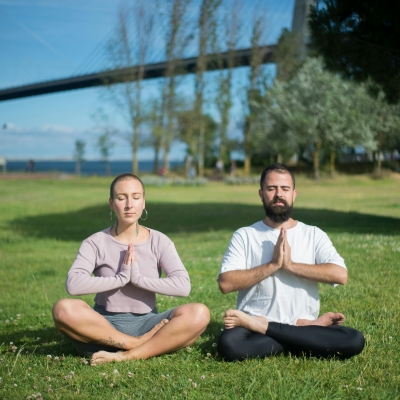
Luis Congdon
Connection is such a powerful piece of making a good society and good family homes. It’s such a vital piece. One of the things that you talked about in one of the gatherings that you went to with agnostics and secular people was that they get together and they do meditations. Now I know that in one of your research experiments, you did my work with meditators. You had them do mindfulness meditation and a meta-meditation.
My understanding of mindfulness meditation is that it may focus on the breath, what you hear right now, and sensations in the body; it is a very kind of present meditation. In contrast, meta meditation focuses on thinking about somebody that you care about, wishing wellness upon them, seeing them happy, and feeling what they might feel as they become happier and are blessed. Can you tell me a little bit about these two types of meditation and what your findings were?
Dr. Paul J. Zak
Right. You’re exactly right. this sort of mindfulness meditation focuses on one’s internal state, calming the mind and slowing the breathing, where meta translates to “loving-kindness.” It’s feeling love towards people who are close to you and then beginning to expand that circle so that you can feel love or care for someone you work with. Maybe a stranger that you met, the person who served your coffee at Starbucks, and then, at the sort of highest level, it would be feeling care or love towards someone difficult, who isn’t the easiest person to get along with. It’s an interesting technique.
We trained people in both types who had never meditated and found that the behavioral impact was stronger among the meta group that focused on love, anything more generous, or more trustworthy after 6 weeks of this training than those who didn’t. We also imaged their brains to find out why we see this behavioral difference and had people meditate in an MRI scanner. We found that there was this reduction in the activity of areas that focus on self and an increase in areas in the brain that are focused on others. I think this focus on others is very important.
You’re asking questions about whether I meditate, and I thought this was a great opportunity. We’re hiring these meditation teachers to teach these participants to meditate in experiments, and I thought I should go into this. It’s free.
I’m paying for it for my grandpa. I can get trained for free, and it was 6 weeks’ worth of training, and I have to admit I went to absolutely none of those. I didn’t go to a single one because it was a Saturday, and I worked a lot of hours during the week. Saturday is kind of my family day, and I didn’t feel I wanted to be away from my children. , I don’t personally meditate. I do pray, which I find helps me connect to others and helps me remember that there’s little in my life that I have control of, that something outside myself is happening is impacting what I’m doing every day. I should recognize that and not think that I can control every aspect of my life.
What I can control is my state, my energy, and my optimism, and I can pass that on to those around me. I think remembering that is a very useful part of this ritual.
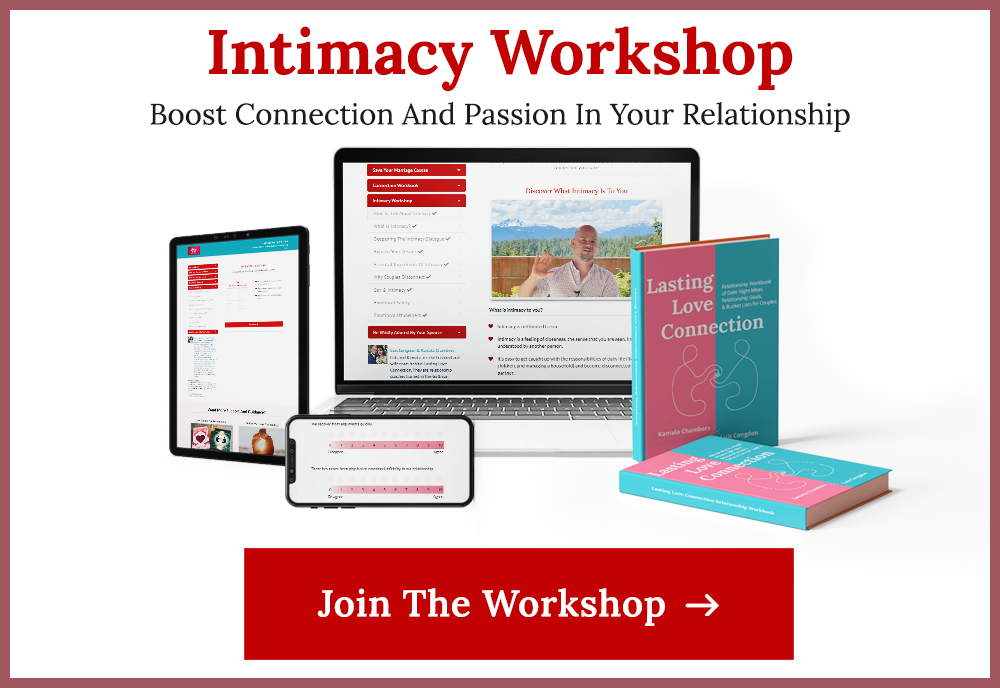
Luis Congdon
I really commend you on making a good choice about spending time with your family. It shows your commitment to your family, and I think spending time with your children is a meta-meditation.
You’re blessing them. You’re spending time connecting with them and bonding with them, giving them the role of a father and being present for that. And there’s much research out there showing that moms have a certain role, and they impart a certain lovingness to children. Fathers also impart certain characteristics and attributes that moms may not be able to do as well.
Experiencing Abuse and The Importance of Social Support

Luis Congdon
Now I know that in your research, I wanted to talk about something that startled me a little bit when I read your book. You did some research with women who had been abused, and I know that what you found is they had irregular releases of oxytocin, tended to be untrusting, and didn’t want to reciprocate. Can you tell me just a little bit about that research?
Dr. Paul J. Zak
Right. As I said earlier, this brain system, needs to be used to function properly and individuals under a lot of stress when they were children, are abused or abandoned, oftentimes this brain circuit doesn’t develop properly. About 50% of the people studied are resilient to the abuse. And that resilience was not associated with the degree or length of the abuse. I think what’s interesting for patients who are watching is that there does seem to be some innate resilience across individuals.
We’ve connected that to particular genes that may confer resiliency. Still, it also means that they’re going to see lots of variations among individuals who have suffered from these kinds of childhood. You can’t study or work in neuroscience without having a lot of tolerance for individual differences. Even within ourselves, our brains are changing over time, our behavior is changing. And for these individuals, I think being supportive is important. Therapy is very important, and I understand that not everyone can get better at the same rate and that people may never get better. The abuse may be too severe.
I do relate a story in the book about one woman in our study. in multiple parts of this, we make sure our cells are released, we image their brains, we genotype them, and we were calling her back for her brain imaging part of her study, and she had died. She was 21 years old. Probably suicide. A lot of depression in this group and a lot of borderline personality disorder. Again, for family members or friends, it’s important to be supportive and to understand that these individuals’ brains are just not working the same as ours, and we can’t expect it to be that way.
Maybe the use of long, even moderate-term use of stimulants like methamphetamine and cocaine can damage oxytocin receptors in the brain. You see a lot of comorbid depression in individuals who are long-term drug users. They often don’t draw on the kind of social support that family members and friends can offer them, not because I think they don’t want it but because they may not have the physical ability to sustain those kinds of connections. And again, it doesn’t mean that friends and family shouldn’t keep trying and shouldn’t be supportive as possible. It just means you may not get that reciprocal oxytocin release from the patient. They may not have the ability in their brains to be as reciprocal as we would like them to be.
And it’s awfully hard. Patients I’ve seen with these disorders, sometimes they’re not nice to be around, sometimes they’re not grateful, sometimes they don’t say thank you. But it doesn’t mean that we should not stop trying to help them. And when you do, as you see patients, you get bumped in the head in the wrong place, and all of a sudden, your personality changes radically, and you’re a different person. And if that were us, we, of course, would like our loved ones to help us to stay around us and not abandon us.
We should try to do the same for the suffering people around us as much as possible.
Luis Congdon
I think about my dad because I was adopted when I was 8, and I was highly abused as a child, and that’s kind of what startled me about your research. But I know that I’m somebody who has made a phenomenal transformation, based on where I came from, my first 8 years, which were kind of the most impactful time of my life. And I’ve had gracious parents, a supportive father and mom, and just the whole family. But my dad, he’s the one who raised me the most, and the amount of patience that he’s shown me as I went through my teenage years putting out all that aggression that I had from my childhood, And you’re right. I mean, that type of compassion that he showed me helped me make the changes that I’ve made and become who I am today.
And you’re right. It just does call upon us to be considerate of others when we know that maybe they’ve been abused, and how helpful I think therapy is to, or counseling or coaching and community. And that’s what I love about your work; it mixes science and real-life stuff. Science is often thought of as something that’s really heady and kind of out there, but what you’re doing is you’re mixing science and saying, here’s science, and here are people living their everyday life, and here’s how the 2 mixes together. I love that.
Dr. Paul J. Zak
Thank you so much. It’s very kind of you to say that.
Reducing Stress and Increasing Oxytocin

Luis Congdon
I just have a few questions, and then I think we can end our conversation. I also wanted to know what some things people can do when they’re overly stressed that might help them calm and relax and maybe raise their oxytocin levels. I think we’ve mentioned a few already.
I just wanted to reiterate to people that stress levels do impact our ability to produce oxytocin, happiness, and the love hormone. What are some things that people can do to reduce stress and increase oxytocin?
Dr. Paul J. Zak
Great question. It turned out that a little bit of stress is good for oxytocin release and brings us together. People are exercising together, and we’ve shown ourselves some dancing, as I mentioned. The saying misery loves company. Sometimes, what you need is company. You need someone to be there to support you. But again, oxytocin is a social molecule, and you need social contact. We have found, for example, that using social media of all types is a good stress reducer.
If you are a little stressed out and you don’t have someone around you, posting on Facebook, tweeting out to your friends, or emailing is pretty good. Some studies from a different lab have shown that talking to a loved one on the phone actually releases oxytocin. I think recognizing that you’re stressed and reaching out to others is important. Then, you’re finding productive ways to burn off that stress: exercise, taking a walk, meditating, or praying.
Again, often we’re better in a group than by one’s self. Even professional Buddhist monks with 10,000 or more hours of meditation training are individuals who are really joyful and very present. I asked a group recently that I was visiting why they still meditate as a group. Look, you guys are pros. Why not just do it in your room? And they said meditation is hard. It’s hard to have the discipline to really reach down inside you and have this sense of calmness and connection. And when you have other people around you doing it, it’s a bit easier. I think the punch line here is that any connection is a good connection, or almost any connection is a good connection. Even things like petting a dog will release oxytocin. So, finding opportunities to do that.
Go to a coffee shop and chat with the person next to you. I mean, I think for people who need a break, this is important. Even retail therapy has some biological basis. If you go shopping, you’re going to chat with that salesperson. Just don’t spend the home mortgage on shopping. But, yeah, going out and getting a coffee, doing some shopping at the mall, and chatting with the salespeople. I mean, all that actually can give people a mood lift and, it’s not just the stock you’re getting, it’s that you’re around the humans and that’s what we need.
As you said, we don’t need to be isolated. Anyway, and obviously, getting off the couch is very important as well. If people are stressed or down, sitting there watching TV is not going to solve it. Even though you may feel wiped out, take a walk and take the dog out around the block a couple of times. So, yeah, I think there’s a variety of ways you can do it and much more in the book.
The Power of Empathy

Luis Congdon
Your book is phenomenal, and I want to mention to people again that it is The Moral Molecule. If they’re interested in getting it, it is available at Barnes and Noble and many different online stores. It’s a fantastic book. I gathered a lot of information for it.
I just wanted to recap some of the stuff that you said, the impact your research has had upon me, and what I’ve gathered from you, too. One thing that I’ve heard from you today is the power of hugging. Your research found that 8 hugs a day help people feel happier.
You also mentioned that when people come into your office, you ask them, “What can I do to make your visit most enjoyable and most beneficial?” I love that question. What a wonderful way to start a visit with somebody that comes into your office.
Is there anything else that you’re doing that maybe you can recap for people that your research has helped you say, “Hey, I want to make these changes in my life. I’m going to add these, implement these because I know that it just makes my life better.”
Dr. Paul J. Zak
Yeah. As the book recounts, it changed my whole life because of my research, and part of that is focusing on individuals. We have a moral institute in my family, which is when we’re out doing something, we have no electronics, and we want to be present for the people around us. And we want to see activities together as adventures. I like the word adventure a lot. We’re going to have every weekend as a time for an adventure and see this as us being together as a family having an adventure. Again, that’s a that’s a good oxytocin simulator.
And then recounting when we get back, that night or the next day, about the adventure we had, enjoying reliving that—is great. But I think one of the easiest things people can do is be transparent. And I don’t have a rule with my wife, complete transparency, and with people around me. You can look at my email, you can look at my phone, you can do whatever you want. It’s all available.
And, for the people I work with, for example, I want them to know exactly how much I get paid, they know, where the grants come from, where the money comes from that pay them pays them. And it simplifies your life. If you say, look, this research project is running out, and we’re behind schedule, and I don’t have any more money to pay you. I’d love it if you could keep working on it because we’re almost done. And that’s a hard conversation if you don’t keep people tuned in to what’s going on.
By the way, many businesses are doing this as well in non-profit organizations. It’s for radical transparency because it’s easy to trust someone who is completely open with you. And again, if you want someone to trust you, you have to be trustworthy, and the easiest way to do that is to be very transparent. And also own up to your mistakes. Again, the book gives people a new language to understand and the people around them and their social relationships.
Luis, I’m sure you’re a wonderful guy, and even you occasionally grump at people. If you grump at me once, instead of saying, “Luis, he’s a terrible guy”, I can say, “Oh, look, normally he’s a great, connecting, loving person, and now he’s stressed out”. Instead of saying, “Oh, you’re a bad person”, I should say, “Oh, you’re probably stressed or you’re keeping your oxytocin released and what do you need from me? What can I do to help you?”
Even as a leader of a lab, I’m much more open to the sort of empathy channel. it’s empathy that people report feeling when their brains release oxytocin, there’s valuable information there. If you can pick up people’s emotional states, then you can be much more effective as a human being, as a leader, as a spouse, and as a parent. I think embracing empathy and love is not squishy in any sense. It’s part of our human makeup, and it’s extraordinarily powerful.
I’ve just ceased to be concerned to ask the question, “Are you okay?”, “May I help you?” “Is there something I can do to make your world a better place?”. And I think people open up right away by asking that question, and almost everybody reciprocates. I mean, there are that couple percent who don’t. They have many of the attributes of psychopaths, and there’s no cure for psychopathology or at least severe psychopathology. Some individuals are just dangerous, and I think that for listeners, it’s 1 or 2% of the world’s population. You do have to be vigilant for these folks, and you don’t want to risk your health, your life, or your wealth. But having said that, almost everybody in a safe setting will reciprocate, and I think that’s a beautiful thing.
If you want to be loved, give love. If you want to be trusted, give trust.
Oxytocin and a World of Happiness and Connection

Luis Congdon
One of the things that I want to point out to listeners who have families or couples is you said that you have a no electronics policy and that every weekend, you guys go out and have a little adventure, and I love that. In the work that I teach, I teach couples to make it a point to have dates. Schedule dates, family dates, and couple dates put them down on a calendar, and say, “Hey, we’re going to go out, and nothing is going to get in the way of this. One of the things that I’ve seen is that when couples go out, I would see couples from time to time with their cell phones in the middle of the table, and I just thought that was the oddest thing. They’re having a nice dinner, but their cell phone is right there where they can see it.
I love your idea of no electronics, where this is our time together; this is our time to connect, and we can connect with the outer world later. But right now, it’s us. I love that. It’s really empowering for couples to say, “Hey, we can have an awesome relationship if we make it a priority.”
I’m hearing from you that it’s a priority for you. You’re just an inspiring person. Thank you very much, Paul. In the time that I’ve spoken with you, I’ve got some ideas for myself about the things that I want to go out and do today and some things that I want to say to people about making myself even more transparent and just showing a little bit more honesty.
I really appreciate your time. Is there anything else you would like to say in closing, or any hopes you have for your book or your research?
Dr. Paul J. Zak
Yeah. You had asked me in our email in which we talked about this interview if it’s having an impact. And I think, the longer I do this, the more I’m comfortable kind of taking off my scientist hat and putting on my human hat and saying, look, it’s not human behavior, and being an advocate for, understanding our human behavior is one of needed connection and for individuals who don’t get that. They’re going to be unhappy, and we can create this world that we want to live in, a world of happiness and connection, and not every second of the day, not for every person.
But we can generally do that, and the data in the book show that countries that have been able to do this have high trust, lots of prosperity, and a lot of happiness. I think there is a real way to build the kind of world that we want to live in.
I’m very optimistic about humans. I think we’re a lot better than we’re given credit for.
Luis Congdon
Thank you so much, Paul. Thank you for your time. Have an awesome day.
Good luck with your meeting. Thank you.
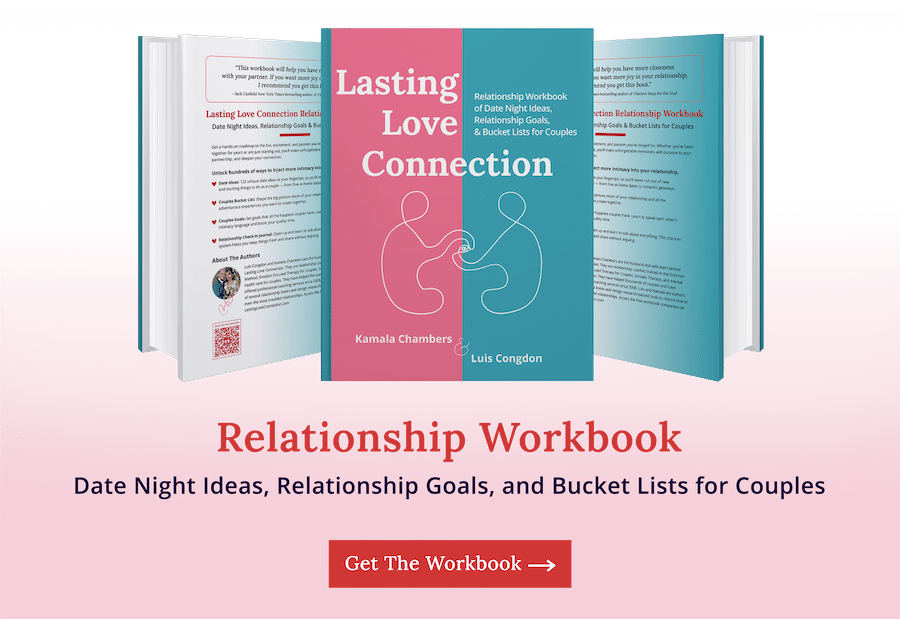
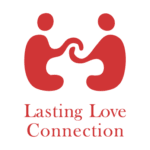


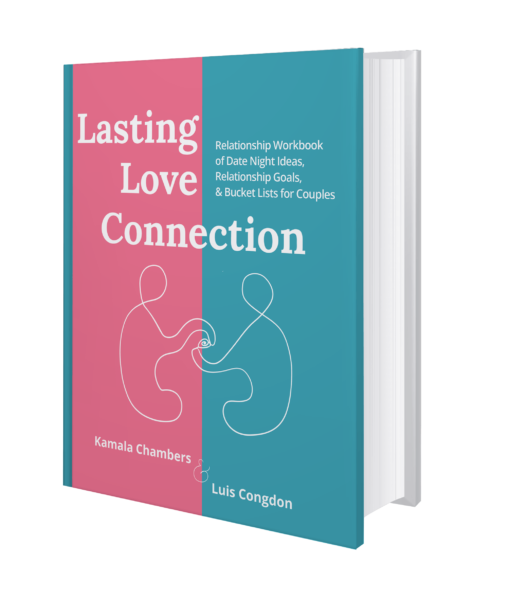
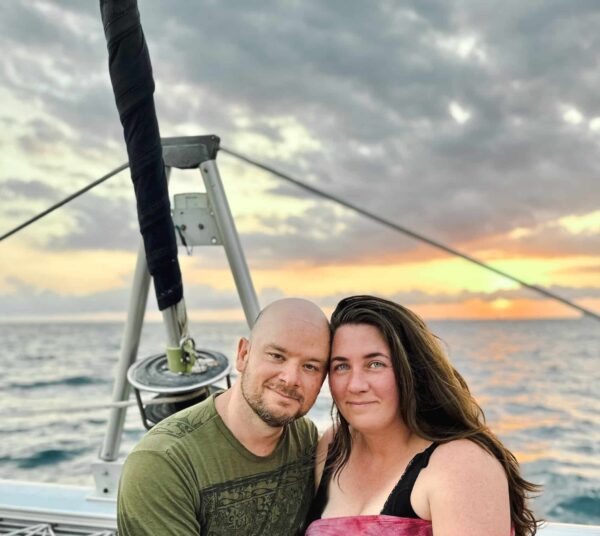
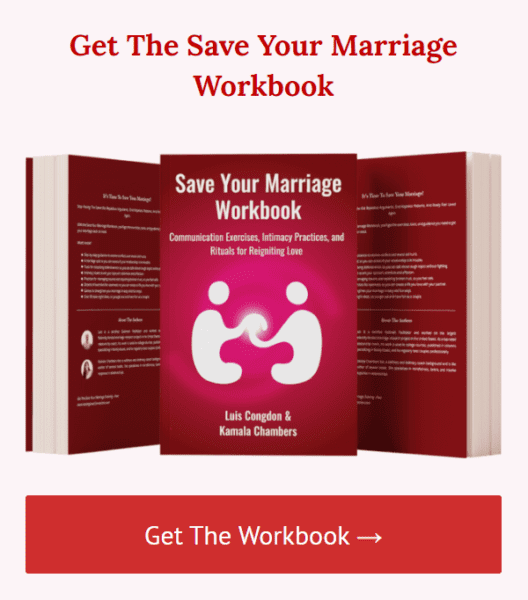
0 Comments